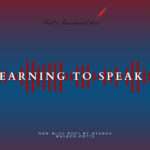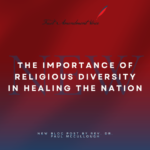 America is divided over the issue of offensive speech, but these divisions don’t fall into simple categories of Democrats versus Republicans or Millennials versus Baby Boomers. At some point, many of us, regardless of age or political affiliation, has been offended by something someone else said. Does the First Amendment protect our rights to offend others (or others’ rights to offend us)? Here are 3 things to consider:
America is divided over the issue of offensive speech, but these divisions don’t fall into simple categories of Democrats versus Republicans or Millennials versus Baby Boomers. At some point, many of us, regardless of age or political affiliation, has been offended by something someone else said. Does the First Amendment protect our rights to offend others (or others’ rights to offend us)? Here are 3 things to consider:
Offensive Speech Across Political Boundaries
Feeling offended is not limited to one political party affiliation. Whereas conservatives disparage “liberal snowflakes” for rallying against hate speech and in favor of political correctness, liberal groups and organizations have offended conservatives with the removal of religious or historical symbols in public spaces and media critiques of Republican figures. In other words: everyone is capable of being offended!
Questions that arise from this dilemma are:
- Should the offensive quality of speech be disregarded in legal considerations related to the First Amendment?
- Should the intent of the speaker have any impact on legal decisions involving offensive speech?
- Are there any legitimate harms to the circulation of offensive speech (such as the fighting words issue)?
- Could Democrats and Republicans ever come to a common understanding on issues related to offensive speech and political correctness?
Matal v. Tam (2017)
Contrary to popular misconceptions, there is no “hateful speech” exception to the First Amendment. This notion was reaffirmed in the 2017 Supreme Court decision in the case of Matal v. Tam. To explain his decision, Justice Kennedy wrote, “A law that can be directed against speech found offensive to some portion of the public can be turned against minority and dissenting views to the detriment of all. The First Amendment does not entrust that power to the government’s benevolence. Instead, our reliance must be on the substantial safeguards of free and open discussion in a democratic society.”
The decision in Matal v. Tam case demonstrates how speech viewed as offensive by a group of people is nevertheless protected under the First Amendment. There will likely be many legal cases similar to this one in the years to come.
Nonverbally Offending Others
The act of offending others isn’t limited to verbal speech or comments written in online, public forums. As the ReACT Gallery in Iowa demonstrates, art can be seen as pushing the boundaries of social appropriateness and downright offensiveness, depending on the values, beliefs and perspective of the person viewing a piece of art.
Similarly, offensive gestures such as raising one’s middle finger are typically protected by the First Amendment, and even “symbolic speech” acts such as burning the US flag have been protected by the First Amendment in Supreme Court decisions like Texas v. Johnson (1989). Nonverbal acts can be considered offensive to many different people, but unless these acts could lead to physical retaliation or even violence, they are generally considered protected under the First Amendment.
Do you think there should be laws prohibiting offensive, nonverbal speech? If so, where do we draw the line?






